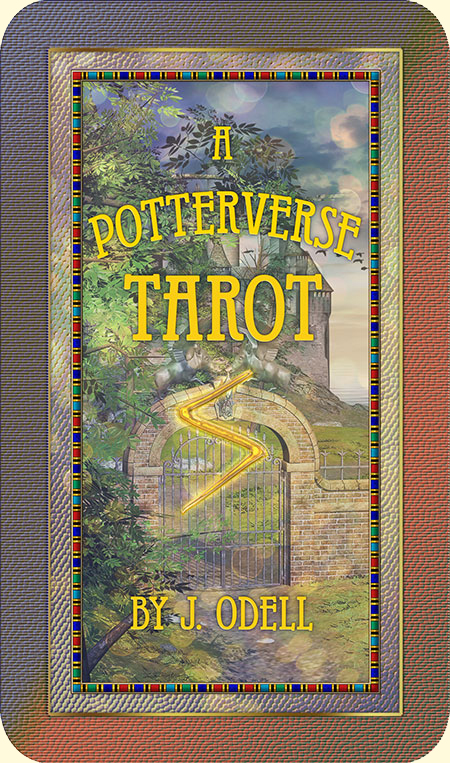Introduction: A Potterverse Tarot

Note: This particular collection contains many pages.
You still get the choice of doing a browse through the whole deck (both versions), in little thumbnails, all at once and moving on to something else, or you can go through the deck card by card, with larger images, capsule interpretations, and the relevant cast members identified, where applicable. But you no longer need to find a button panel to get to them. Or hunt them out from a collection of flaky dropdowns. The links have all been moved to the sidebar.
Admittedly, there are a lot of them, so be prepared to scroll.
As in the earlier iterations of the site, there are download files accessible from the instructions & downloads page.
First off: I think it needs to be stated that this deck is NOT based on the official Harry Potter canon. The Potterverse Tarot project spun off from a pair of projected Publications projects based on a pair of intertwined fanfics. Therefore, the cast members have often been depicted in their fanfic rôles, rather than canon ones. They also may be depicted at different ages than we saw them in canon. A few of them turn up more than once, at various ages, in various contexts.
The fanfics (there are two of them); both perpetual WiPs, are: ‘Amends: or, Truth and Reconciliation’ and; ‘In Which the Princess Rescues the Dragon’. Both are by Vera Rozalsky, and may be found on ff.net. They have been in limbo for some years now, I suspect that it may well be wise to consider them abandoned.
It also rather belatedly sunk in for me that the majority of the viewers here probably didn't live though the ’60s and ’70s where, if you weren't being asked; “What’s your sign?” on alternate Tuesdays, you were probably dabbling in the Tarot. Consequently a lot of the visitors may not be at all familiar with the Tarot.
I gather that in much of Europe a Tarot deck is used to play various games, which were designed for it. Like, say, pinochle, which also has its own deck. I also gather that in those parts of Europe the predominant deck is the Marseille Tarot, which is a traditional deck in which only the face cards have images. In much of the English-speaking world, however, the Tarot is associated almost exclusively with fortune-telling, or, more generally, as a meditation aid. I have also heard of it being used as a “random plot generator” by at least one author. (I should think it might be rather good at that. Or at least as good as rolling multi-sided dice a lá Dungeons & Dragons.)
In the U.S., the predominant deck is widely known as the Rider deck — or the Waite deck, or sometimes as the Rider-Waite deck. Waite was the author who designed it (although he wasn't the artist who was commissioned to draw it) and Rider the company which published it. That was back in the year 1910, so it's been around a while. And, in most of the English-speaking world it is the deck that everyone knows. Much of the reason for its popularity is that in the Rider deck, every card has an image. It is my understanding that the Rider deck was the first deck to have such.
Er… a word of warning; this is a fairly straighforward Rider deck homage. There’s a fair amount of nudity in a classic Rider deck (at least in the Major Arcana).
My little capsule interpretations of the various cards (which really are only capsule interpretations) were compiled largely from the Eden Grey guide; ‘The Tarot Revealed’ ©1960 — which clearly assumes you are going to be using the deck for fortune-telling, and the Stuart R. Kaplan instructions from the Hanson-Roberts Tarot Deck, which approaches it a bit more as a meditation device. Occasionally these are expanded with variant takes of my own.
